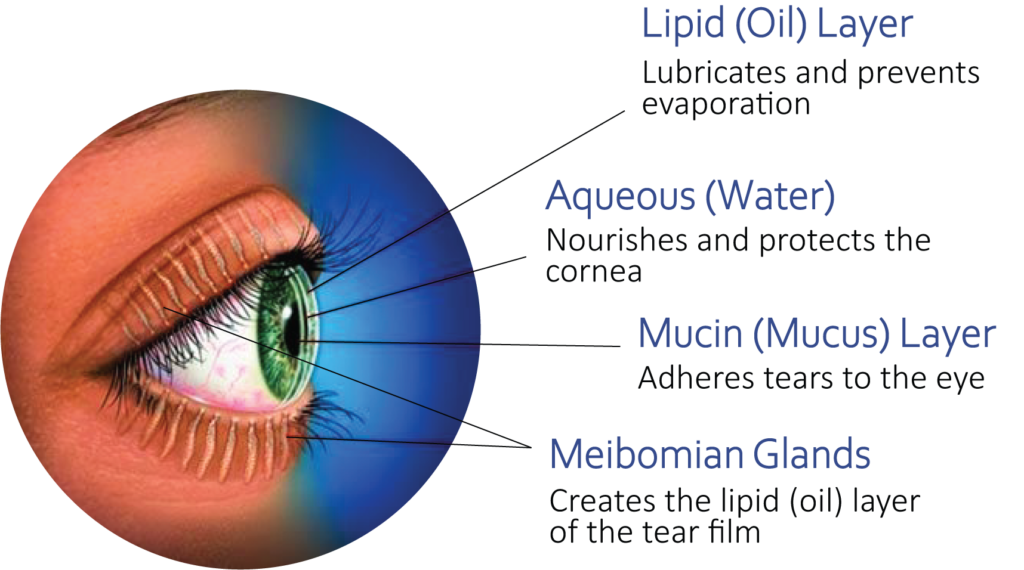
Tears are a complex blend of water, oils, mucus, and antibodies that maintain eye health and clarity. When the balance of these components is disrupted, dry eye symptoms arise. Causes can include:
Age: Aging is a common factor leading to decreased tear production and increased risk of dry eyes.
Environmental Factors: Dry or windy climates, air conditioning, heating, and prolonged screen time can exacerbate dry eye symptoms.
Medical Conditions: Conditions like autoimmune diseases, hormonal changes, allergies, and certain medications can contribute to dry eyes.
Lifestyle Habits: Extended periods of digital device use, insufficient blinking, or contact lens wear can also trigger or worsen dry eye symptoms.
Dry eye symptoms can manifest in various ways, including:
Stinging or Burning Sensation: A common symptom experienced by individuals with dry eyes.
Redness: Eyes may appear red or bloodshot due to irritation.
Blurred Vision: Vision may fluctuate or become blurry due to inadequate tear film.
Sensitivity to Light: Dry eyes can increase sensitivity to light, causing discomfort in brightly lit environments.
Grittiness or Foreign Body Sensation: Feeling as though something is in the eye is a typical complaint.
Diagnostic Evaluation: Our approach begins with a thorough evaluation, including a detailed history, comprehensive eye exams, and specialized tests to assess tear quality, quantity, and ocular surface health.
Personalized Treatment Plans: Based on the evaluation, we develop individualized treatment plans, which may include:
Patient Education and Self-Care: Educating patients about dry eye management strategies and self-care practices is integral to our approach. We provide guidance on proper eye hygiene, blink exercises, and methods to alleviate symptoms.
Ongoing Monitoring and Support: Managing dry eyes is often a lifelong journey. Regular follow-ups enable us to track progress, adjust treatment plans, and offer ongoing support to our patients.
Research and technological advancements continue to enhance dry eye management. From innovative treatments to advanced diagnostic tools, we remain at the forefront of these developments to provide our patients with the most effective and cutting-edge solutions.
Dry eyes can significantly impact daily life and ocular health. Through our comprehensive approach, individualized care, and commitment to staying abreast of advancements in dry eye management, we aim to alleviate discomfort, restore ocular health, and improve the quality of life for individuals battling dry eye syndrome.
| Sunday to Friday | 02:00 PM to 05:00 PM |
| Saturday | Closed |
| Monday to Sunday | 06:00 PM to 08:00 PM |
| Everyday | Open |
Copyright @ 2023 | Dr. Lokesh Paliwal Eye Care Foundation | All rights reserved